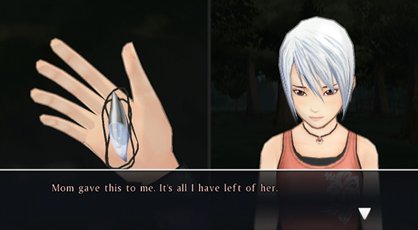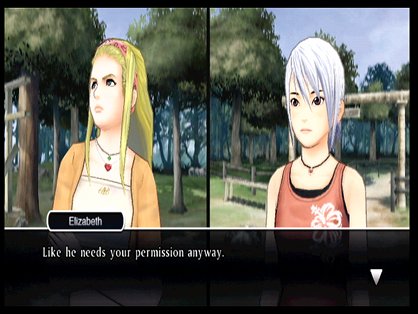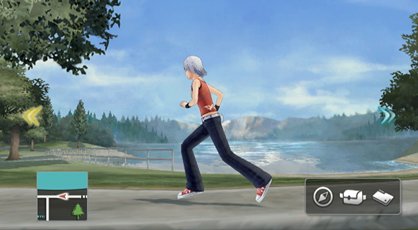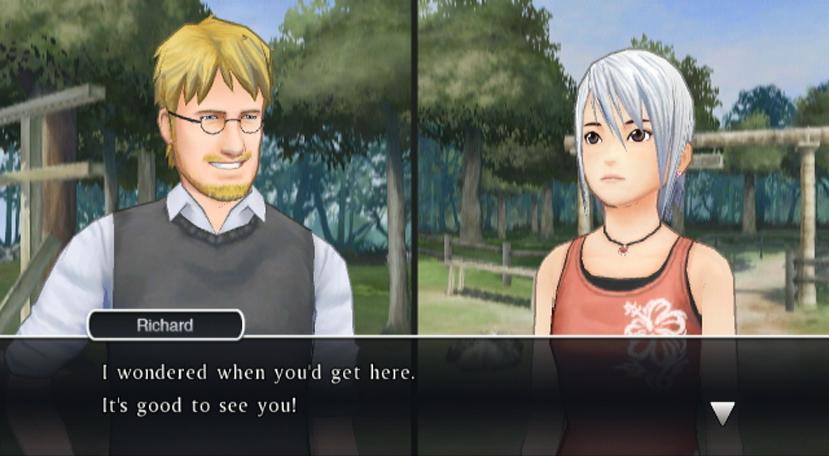GamesRadar+ Verdict
Pros
- +
Pretty landscapes
- +
Decent puzzles
- +
Gently intriguing story
Cons
- -
Characters either emotive or animatronic freak-bots
- -
Puzzles drown in the wordage
- -
Constant unraveling text noise
Why you can trust GamesRadar+
Newsflash, people: a game can have more words than bullets. Another Code R has more words than anything – a surprise after the more controlled ratio of chat to puzzle in the DS original. In actuality it feels like the first game filtered through Hotel Dusk, adopting the extensive nattering but keeping Code’s more innovative puzzle design.

Disappointingly, R drops Dusk’s adult vocabulary and attitude. Hotel Dusk’s curt, moody tone was what carried the endless flow of text; sentimentality suppressed with a sarcastic half-swear. In comparison, Another Code is dry and packed with enough teary-eyed mush to power five seasons of Heartbeat.
It’s lucky, then, that Cing pack the tale, almost ridiculously so, with intrigue. What’s this? Someone burnt down Old Man Fitzgerald’s place? And there’s a shady guy with sunglasses? And reports of contaminated water? And hermit celeb photographers? And a bell tower that tolls doom for all who go near it? So many mystery carrots are dangled in front of you it’s like 20 episodes of Scooby-Doo rolled into one. And, you’ll be pleased to hear, it wasn’t the caretaker what done it. (Although there are a couple of unsatisfying loose ends suggesting that a grander narrative existed at some point.)

So what about the puzzles? You know, the item combination and 3D spatial manipulation that ‘mystery novels’ are so famous for? The original’s appeal hinged largely on its genius application of the DS technology (right down to the hinges, in fact). The remote takes the baton this time, offering Zack & Wiki-styled minigames where the pointer acts as Ashley’s hand or the object itself. Slide a lock! Throw a rubber ring! Pour a water testing kit! Pour it again! And again! Repeat pH testing aside, these are fun asides, tightly implemented.
Alas, puzzles disappear entirely during talky segments, and if you’re looking for a catalogue’s worth of inventory hijinks, stick with Secret Files 2. Pointing-and-clicking occurs, but Cing are more interested in telling their tale than halting it with brain-teasing interludes. Puzzle lapse is painfully felt with the Touch Another System, Ashley’s remote-mimicking device. It’s smart when you use it – you have to deduce how to input buttons that aren’t on the remote – but it vanishes for a five-hour chunk of the game. A rollicking puzzle gauntlet in the final two hours makes amends, but we’d prefer better pacing throughout.

Unfortunately, we just don’t see anyone thinking as fondly of the Wii puzzles as they did the DS ones. Bar a canny use of the home button there’s nothing close to the cleverness of reflecting the handheld’s two screens off one another or closing the lid. They don’t even use the synching button. Outrageous. You get four times more words, but only one quarter of the memories. Anyway you look at it, the math is off. Perhaps Cing just work better on the DS; we’re getting sweaty-palmed over what they could do with the DSi camera. To summarize: not a book, but a bit by the book.
Jun 26, 2009
More info
| Genre | Adventure |
| Description | This adventure game for the Wii has an engrossing murder mystery to tell, even if the technical fumbles and a less mature style hold it back from the quality of its better DS counterparts. |
| Platform | "Wii" |
| US censor rating | "" |
| UK censor rating | "7+" |
| Alternative names | "Trace Memory" |
| Release date | 1 January 1970 (US), 1 January 1970 (UK) |



